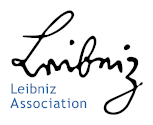- The Institute
- Research
- Dictatorships in the 20th Century
- Democracies and their Historical Self-Perceptions
- Transformations in Most Recent History
- International and Transnational Relations
- Edited Source Collections
- Dissertation Projects
- Completed Projects
- Dokumentation Obersalzberg
- Center for Holocaust Studies
- Berlin Center for Cold War Studies
- Publications
- Vierteljahrshefte
- The Archives
- Library
- Center for Holocaust Studies
- News
- Dates
- Press
- Recent Publications
- News from the Institute
- Topics
- Munich 1972
- Confronting Decline
- Feminist, Pacifist, Provocateur
- Der Mauerbau als Audiowalk
- Digital Contemporary History
- Transportation in Germany
- Envisaged Futures at the End of the Cold War
- From the Reichsbank to the Bundesbank
- German Federal Chancellery
- History of Sustainabilities: Discourses and Practices since the 1970s
- Changing Work
- Democratic Culture and the Nazi Past
- The History of the Treuhandanstalt
- Foreign Policy Documentation (AAPD)
- Dokumentation Obersalzberg
- Hitler, Mein Kampf. A Critical Edition
- "Man hört, man spricht"
- Dictatorships in the 20th Century
- Democracies and their Historical Self-Perceptions
- Transformations in Most Recent History
- International and Transnational Relations
- Edited Source Collections
- Dissertation Projects
- Completed Projects
- Dokumentation Obersalzberg
- Center for Holocaust Studies
- Berlin Center for Cold War Studies
Private Lives in the Ghetto
Projektinhalt:
The living conditions of the Jewish population changed radically with the beginning of German rule in Poland in autumn 1939. The majority of the Jewish people there soon found themselves facing precarious living conditions in ghettos. Carlos A. Haas deals with the transformation processes affecting various aspects of the private sphere in ghettos, using the ghettos in Warsaw, in Litzmannstadt (Łódź), in Tomaschow (Tomaszów Mazowiecki), and Petrikau (Piotrków Trybunalski) as examples. The study seeks to build on the questions from the history of everyday life (Alltagsgeschichte), gender studies, and Jewish studies that have increasingly become a focus of research in recent years. The project aims to examine the history of the ghettos and thus the history of the Holocaust from a new perspective, the perspective of the “private”.
Space and time serve as analytical categories for different areas of transformation and the basic conditions of the private. How spatial and temporal restrictions were handled had a decisive influence on life in the ghettos, as reflected in social practices in which transformations manifested themselves. Which social practices made it possible to allow proximity or to build up distance?
A short opening section deals with Jewish developments in the course of the Second Polish Republic, as a means of illustrating lines of continuity with the later victims of the Holocaust. This is followed by an analysis of the first month of the war, a period of radical upheaval in which the German occupying forces quickly established new framework conditions for the private sphere.
The four ghettos selected for analysis all were in existence for at least three years. Their inmates succeeded in expanding or redefining residual aspects of the private. The study focuses on the practices of writing and reading, which could express self-determination and autonomy. They could also form part of a process of sense making in a ghetto environment that was under extreme external control. The project also addresses the general need for solitude and transformation in the context of relationships between members of couples and both within the intimate social sphere and in the context of religious lives. To what extent did the many different realities of life that had developed in Poland’s Jewish population during the interwar period lead to different practices in all these areas? Are there patterns of interpretation that can meaningfully complement the self-evident narrative of loss? The question for transformation of the private in the ghetto provides insight into the modes and mechanisms of coexistence within this involuntary community. On the basis of contemporary ego-documents, the project asks to what extent the practical fields of proximity and distance may have served as a resource for interpretation. Given their pre-war knowledge and experience with regard to the practice of the private, to what degree were the ghetto inhabitants able to at least begin to grasp the dynamics of indirect and direct annihilation?
The study was accepted as a dissertation by the Faculty of History and the Arts at Ludwig Maximilian University, Munich in Winter Semester 2017/18. The dissertation won the Leibniz Dissertation Award of the Leibniz Association in November 2018.
--> Return to the project “Private Life and Privacy in Nazi Germany”
Publications within the project
Carlos Alberto Haas
Das Private im Ghetto.
Private Life and Privacy in National Socialism
Göttingen 2020






